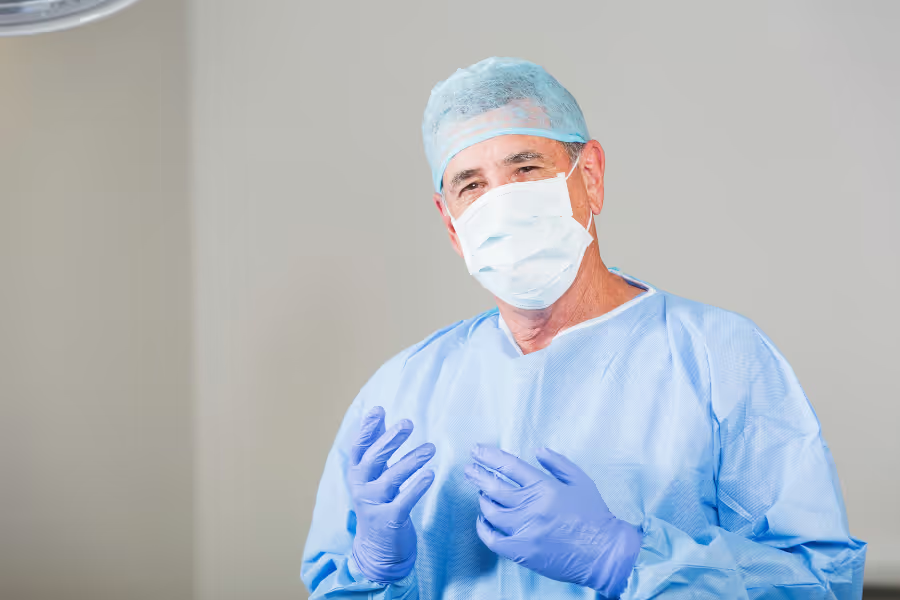Sinus surgery opens blocked sinus pathways to improve breathing, reduce infections, and relieve chronic facial pressure. Find the right ENT surgeon who fits your needs below, serving Canadians in major cities like Vancouver, British Columbia; Edmonton, Alberta; Toronto, Ontario; and Montréal, Québec.
Informational purposes only, not medical or legal advice. Please consult your doctor or surgeon.

Sinus surgery is an operation to open and clean out the sinus spaces in your face so they can drain and breathe properly again. Your sinuses are air‑filled pockets around your nose and eyes. Normally, thin mucus flows through small passages into your nose. When those passages are blocked by swollen tissue, polyps, or bone narrowing, you can get constant congestion, pressure, infections, or trouble breathing through your nose.
There are two main types:
The main goal is not to “give you new sinuses,” but to create a clearer, more open pathway so mucus and air move normally. That makes it easier for your nose sprays and medications to work and can reduce the cycle of blockages and infections.
Going private gives you more say. You can:

For balloon sinuplasty, the main steps are similar at the start (check‑in, anaesthesia, camera in), but instead of cutting out tissue, the surgeon:
It’s usually less “clean‑up” and more “careful stretching,” which is why recovery can be quicker for some people.

Every nose is different—follow your surgeon’s plan. Rinses and follow‑ups matter a lot.
Reality check: stuffy, drippy, tired. Your nose will not feel “fixed” yet.
You’ll likely breathe mostly through your mouth at first, especially if you have packing or splints.
Still annoying but clearly better.
The “better breathing” phase.
Call your care team if you notice:
Exact prices depend on how many sinuses are treated, surgery type (endoscopic/ balloon sinuplasty) whether polyps/septum/turbinates are added, clinic location, and OR time. Always ask for a written, itemized quote.
In Canada Private clinics charge between $6,000–$18,000+.
In the United States, you can expect between CA$6,400 - $25,000+.
(but confirm each clinic’s policy and ask them to itemize)
Choosing your surgeon is a big benefit of going private. Here's how to choose wisely.
Sinus surgery is meant to open blocked sinus pathways and remove problem tissue, not to “give you new sinuses.” It might be right for you if:
No, you do not need a referral for a private sinus surgery in Canada. You can book a consultation directly with a ENT surgeon, and they will review your options and diagnostics.
Your surgeon’s instructions always come first—if their plan is different, follow that.
Breathing and nose routine
Stop smoking/vaping
Medications
Allergy and congestion plan
General health
Medical clearance
Sleep setup
Bathroom and nose‑care station
Comfort kit
Clothing and food
A helper
School and work
Sports and music
Fasting
Skin and nose prep
What to bring
Jewellery and piercings
Your personal risk depends on your health, how blocked/inflamed your sinuses are, whether polyps/septum/turbinates are also treated, the type of anaesthesia, and how well you follow after‑care. Always go over your own risks with your ENT.
Red flags—call your care team or go to ER
Sinus surgery is generally safe and helps many people breathe and drain better. Most issues are mild and short‑term, especially with an experienced ENT and good after‑care.
Your situation depends on how often your sinuses flare, what your CT/endoscopy shows (blocked openings, polyps, chronic infection), your allergy control, and how well non‑surgical care works (saline, steroid sprays, antihistamines, antibiotics). Talk specifics with your ENT.
(when symptoms are significant and persistent)
Progressive symptoms and limits
Sinus and nose problems
Lower quality of life and performance
Medication dependence and side effects
Harder problem to treat later
If you still have questions, then feel free to contact us directly.

Browse vetted ENT surgeons across Canada. Compare prices, qualifications, locations.
BROWSE SURGEONS